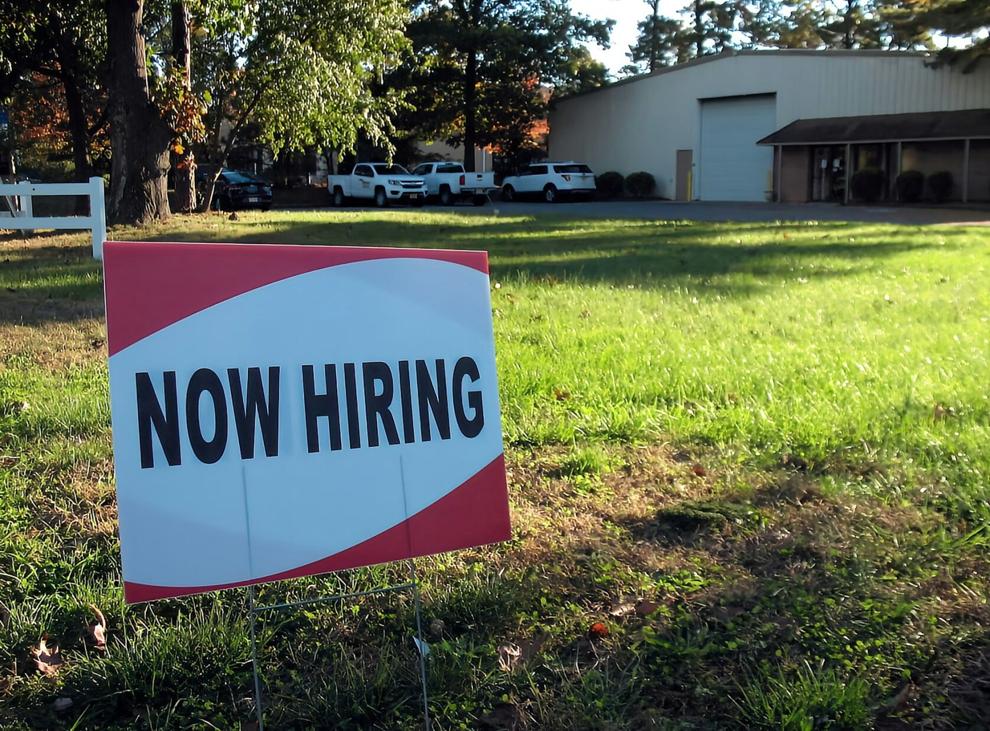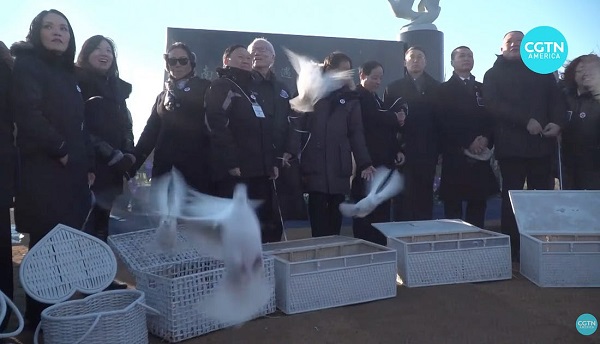Health
AGs Question Pediatricians Pushing Trans Treatment

From Heartland Daily News
In encouraging the use of puberty blockers, cross-sex hormones, and surgical interventions, the AAP claims the treatments are reversible. The AG letter says that is “misleading and deceptive.”
“It is beyond medical debate that puberty blockers are not fully reversible, but instead come with serious long-term consequences,”
Attorney generals from 20 states and legislators from Arizona signed an interrogatory letter to the president of the American Academy of Pediatrics (AAP) about the group’s support of puberty blockers, cross-sex hormones, and surgery for children and adolescents who have been diagnosed with gender dysphoria.
“Often the AAP has exercised its influence responsibly,” states the letter. “… But when it comes to treating children diagnosed with gender dysphoria, the AAP has abandoned its commitment to sound medical judgment.”
The AG letter demanded responses to multiple questions about its child gender policies by October 8, and it stated AAP’s conduct is being reviewed further.
Idaho Attorney General Raul R. Labrador sent the letter, and AGs from Alabama, Arkansas, Florida, Georgia, Iowa, Kansas, Louisiana, Mississippi, Missouri, Montana, Nebraska, North Dakota, Ohio, South Carolina, South Dakota, Texas, Utah, Virginia, and West Virginia signed it, as did the president of the Arizona State Senate and the speaker of the Arizona House.
Sounding an Alarm
The American College of Pediatricians (ACPeds), an alternative medical professional organization, has spent years sounding the alarm on AAP-approved transgender treatments.
ACPeds organized a coalition of health care professionals to create the Doctors Protecting Children Declaration, a document urging organizations to stop promoting what ACPeds calls unethical, harmful practices in treating children with gender dysphoria. Some 82,500 professionals and concerned citizens have signed the declaration.
“We have personally reached out to the AAP leadership and leaders of the other named organizations, asking them to put a stop to this, and have not received a response,” said ACPeds Executive Director Jill Simons, M.D.
“Unfortunately, the leadership of the AAP and other organizations have silenced their very members from engaging in medical discourse when they have put in question these harmful protocols, and they continue to double down on them even as they stand without evidence-based research to support their current positions,” said Simons.
Questioning What’s ‘Reversible’
In encouraging the use of puberty blockers, cross-sex hormones, and surgical interventions, the AAP claims the treatments are reversible. The AG letter says that is “misleading and deceptive.”
“It is beyond medical debate that puberty blockers are not fully reversible, but instead come with serious long-term consequences,” the letter states.
The letter cites the widely recognized Cass Review commissioned by Britain’s National Health Service and published in April.
“The Cass Review was monumental in demonstrating, through the most thorough review of the research and current protocols and outcomes in England, that the current protocols of social affirmation, puberty blockers, and cross-sex hormones do not improve the health outcomes of children with gender dysphoria and in fact there is evidence of causing harm,” said Simons.
“Dr. Hilary Cass’s recommendation has shut down the practice of transitioning kids in England,” said Simons. “Many other European countries are also reversing course and returning to proven medical care, which is supportive mental health and addressing underlying diagnoses.”
Leaked files from the World Professional Association of Transgender Health (WPATH) and a recent statement from the American Society of Plastics Surgeons have bolstered the case against surgical and hormonal trans treatments, says Simons.
APA, AMA Uninterested
A growing number of people are recognizing the validity of the studies, says Dr. Tim Millea, chair of the Health Care Policy Committee and Conscience Rights Protection Task Force of the Catholic Medical Association (CMA).
“Physician organizations such as AAP and [American Medical Association] appear to be uninterested in those studies, at the expense of ongoing harm to Americans that they encourage to enter the ‘gender-industrial’ medical system,” said Millea. “It seems to be true that the leadership of these groups prioritize ideology over science, which is a dereliction of duty in the vocation of medicine.”
Doctors Afraid to Speak Out
Most U.S. pediatricians are members of the AAP. Dissent within the organization has led to the development of alternative professional organizations such as ACPeds. The AAP is too radical for most pediatricians, though they are reluctant to say so, says Simons.
“I speak to countless pediatricians who are members of the AAP who disagree with the AAP’s policies and fully support our efforts to put a stop to these unethical protocols, but they are truly fearful of losing their jobs and the harms that will come to them if they speak out,” said Simons. “I unfortunately speak to pediatricians who have been reprimanded and even fired for speaking out.”
Going to Court
The AAP has been named in multiple lawsuits against doctors and hospitals. Members of ACPeds have served as expert witnesses and submitted amicus briefs to fight the AAP’s gender treatment protocols.
ACPeds also filed a lawsuit against the Biden-Harris administration for its rule requiring doctors to perform gender transition procedures on minors against their medical judgment.
“The American College of Pediatricians is filing this lawsuit against HHS because doctors should never be forced to violate their sound medical judgment and perform life-altering and sterilizing interventions on their patients,” stated ACPeds news release. “Our doctors take an oath to do no harm, but the Biden administration’s rule forces them to violate this oath and perform procedures that are harmful and dangerous to our patients– vulnerable children. What the Biden Administration is calling for is wrong and unlawful.”
Over the past several years, the CMA has been involved in gender intervention cases around the country and plans to file an amicus brief for the Supreme Court case United States v. Skrmetti, scheduled to be heard during the current session.
Changing the Culture
CMA hosted a two-hour panel discussion on September 8, 2024, in which several de-transitioners recounted the harms they suffered from gender transition procedures as minors. The organization wants to make sex-change procedures among children, teens, and young adults unthinkable, says Millea.
“There are three areas of emphasis to accomplish that goal, and two of them are judicial and legislative,” said Millea. “The third is of greatest importance, and that is cultural. The public needs to learn and understand the negative and lifelong risks and complications of gender transition.
“We remain hopeful that doctors will push back against these protocols and follow their oath to do no harm,” said Simons. “There will be a tipping point when doctors are no longer fearful and will speak out.”
Ashley Bateman ([email protected]) writes from Virginia.
Health
All 12 Vaccinated vs. Unvaccinated Studies Found the Same Thing: Unvaccinated Children Are Far Healthier

I joined Del Bigtree in studio on The HighWire to discuss what the data now make unavoidable: the CDC’s 81-dose hyper-vaccination schedule is driving the modern epidemics of chronic disease and autism.
This was not a philosophical debate or a clash of opinions. We walked through irrefutable, peer-reviewed evidence showing that whenever vaccinated and unvaccinated children are compared directly, the unvaccinated group is far healthier—every single time.
Reanalyzing the Largest Vaccinated vs. Unvaccinated Birth-Cohort Study Ever Conducted
At the center of our discussion was our peer-reviewed reanalysis of the Henry Ford Health System vaccinated vs. unvaccinated birth-cohort study (Lamerato et al.)—the largest and most rigorous comparison of its kind ever conducted.
|
The original authors relied heavily on Cox proportional hazards models, a time-adjusted approach that can soften absolute disease burden. Even so, nearly all chronic disease outcomes were higher in vaccinated children.
Our reanalysis used direct proportional comparisons, stripping away the smoothing and revealing the full magnitude of the signal.
- All 22 chronic disease categories favored the unvaccinated cohort when proportional disease burden was examined
- Cancer incidence was 54% higher in vaccinated children (0.0102 vs. 0.0066)
- When autism-associated conditions were grouped appropriately—including autism, ADHD, developmental delay, learning disability, speech disorder, neurologic impairment, seizures, and related diagnoses—the vaccinated cohort showed a 549% higher odds of autism-spectrum–associated clinical outcomes
The findings are internally consistent, biologically coherent, and concordant with every prior vaccinated vs. unvaccinated study, all of which show drastically poorer health outcomes among vaccinated children
The 12 Vaccinated vs. Unvaccinated Studies Regulators Ignore
In the McCullough Foundation Autism Report, we compiled all 12 vaccinated vs. unvaccinated pediatric studies currently available. These studies span different populations, countries, study designs, and data sources.
Every single one reports the same overall pattern. Across all 12 studies, unvaccinated children consistently exhibit substantially lower rates of chronic disease, including:
- Autism and other neurodevelopmental disorders
- ADHD, tics, learning and speech disorders
- Asthma, allergies, eczema, and autoimmune conditions
- Chronic ear infections, skin disorders, and gastrointestinal illness
This level of consistency across independent datasets is precisely what epidemiology looks for when assessing causality. It also explains why no federal agency has ever conducted—or endorsed—a fully vaccinated vs. fully unvaccinated safety study.
Flu Shot Failure
We also addressed the persistent failure of seasonal influenza vaccination.
A large Cleveland Clinic cohort study of 53,402 employees followed participants during the 2024–2025 respiratory viral season and found:
- 82.1% of employees were vaccinated against influenza
- Vaccinated individuals had a 27% higher adjusted risk of influenza compared with the unvaccinated state (HR 1.27; 95% CI 1.07–1.51; p = 0.007)
- This corresponded to a negative vaccine effectiveness of −26.9% (95% CI −55.0 to −6.6%), meaning vaccination was associated with increased—not reduced—risk of influenza
When vaccination exposure increases, chronic disease, neurodevelopmental disorders, and inflammatory illness increase with it. When children are unvaccinated, they are measurably healthier across virtually every outcome that matters.
The science needed to confront the chronic disease and autism epidemics already exists. What remains is the willingness to acknowledge it.
Epidemiologist and Foundation Administrator, McCullough Foundation
Support our mission: mcculloughfnd.org
Please consider following both the McCullough Foundation and my personal account on X (formerly Twitter) for further content.
FOCAL POINTS (Courageous Discourse) is a reader-supported publication.
To receive new posts and support my work, consider becoming a free or paid subscriber.
Alberta
A Christmas wish list for health-care reform

From the Fraser Institute
By Nadeem Esmail and Mackenzie Moir
It’s an exciting time in Canadian health-care policy. But even the slew of new reforms in Alberta only go part of the way to using all the policy tools employed by high performing universal health-care systems.
For 2026, for the sake of Canadian patients, let’s hope Alberta stays the path on changes to how hospitals are paid and allowing some private purchases of health care, and that other provinces start to catch up.
While Alberta’s new reforms were welcome news this year, it’s clear Canada’s health-care system continued to struggle. Canadians were reminded by our annual comparison of health care systems that they pay for one of the developed world’s most expensive universal health-care systems, yet have some of the fewest physicians and hospital beds, while waiting in some of the longest queues.
And speaking of queues, wait times across Canada for non-emergency care reached the second-highest level ever measured at 28.6 weeks from general practitioner referral to actual treatment. That’s more than triple the wait of the early 1990s despite decades of government promises and spending commitments. Other work found that at least 23,746 patients died while waiting for care, and nearly 1.3 million Canadians left our overcrowded emergency rooms without being treated.
At least one province has shown a genuine willingness to do something about these problems.
The Smith government in Alberta announced early in the year that it would move towards paying hospitals per-patient treated as opposed to a fixed annual budget, a policy approach that Quebec has been working on for years. Albertans will also soon be able purchase, at least in a limited way, some diagnostic and surgical services for themselves, which is again already possible in Quebec. Alberta has also gone a step further by allowing physicians to work in both public and private settings.
While controversial in Canada, these approaches simply mirror what is being done in all of the developed world’s top-performing universal health-care systems. Australia, the Netherlands, Germany and Switzerland all pay their hospitals per patient treated, and allow patients the opportunity to purchase care privately if they wish. They all also have better and faster universally accessible health care than Canada’s provinces provide, while spending a little more (Switzerland) or less (Australia, Germany, the Netherlands) than we do.
While these reforms are clearly a step in the right direction, there’s more to be done.
Even if we include Alberta’s reforms, these countries still do some very important things differently.
Critically, all of these countries expect patients to pay a small amount for their universally accessible services. The reasoning is straightforward: we all spend our own money more carefully than we spend someone else’s, and patients will make more informed decisions about when and where it’s best to access the health-care system when they have to pay a little out of pocket.
The evidence around this policy is clear—with appropriate safeguards to protect the very ill and exemptions for lower-income and other vulnerable populations, the demand for outpatient healthcare services falls, reducing delays and freeing up resources for others.
Charging patients even small amounts for care would of course violate the Canada Health Act, but it would also emulate the approach of 100 per cent of the developed world’s top-performing health-care systems. In this case, violating outdated federal policy means better universal health care for Canadians.
These top-performing countries also see the private sector and innovative entrepreneurs as partners in delivering universal health care. A relationship that is far different from the limited individual contracts some provinces have with private clinics and surgical centres to provide care in Canada. In these other countries, even full-service hospitals are operated by private providers. Importantly, partnering with innovative private providers, even hospitals, to deliver universal health care does not violate the Canada Health Act.
So, while Alberta has made strides this past year moving towards the well-established higher performance policy approach followed elsewhere, the Smith government remains at least a couple steps short of truly adopting a more Australian or European approach for health care. And other provinces have yet to even get to where Alberta will soon be.
Let’s hope in 2026 that Alberta keeps moving towards a truly world class universal health-care experience for patients, and that the other provinces catch up.
-

 International23 hours ago
International23 hours agoOttawa is still dodging the China interference threat
-

 Business21 hours ago
Business21 hours agoThere’s No Bias at CBC News, You Say? Well, OK…
-

 Automotive20 hours ago
Automotive20 hours agoCanada’s EV gamble is starting to backfire
-

 International22 hours ago
International22 hours ago2025: The Year The Narrative Changed
-

 Fraser Institute2 days ago
Fraser Institute2 days agoCarney government sowing seeds for corruption in Ottawa
-

 Daily Caller2 days ago
Daily Caller2 days agoWhile Western Nations Cling to Energy Transition, Pragmatic Nations Produce Energy and Wealth
-

 Business1 day ago
Business1 day agoResidents in economically free states reap the rewards
-

 Alberta1 day ago
Alberta1 day agoAlberta project would be “the biggest carbon capture and storage project in the world”











